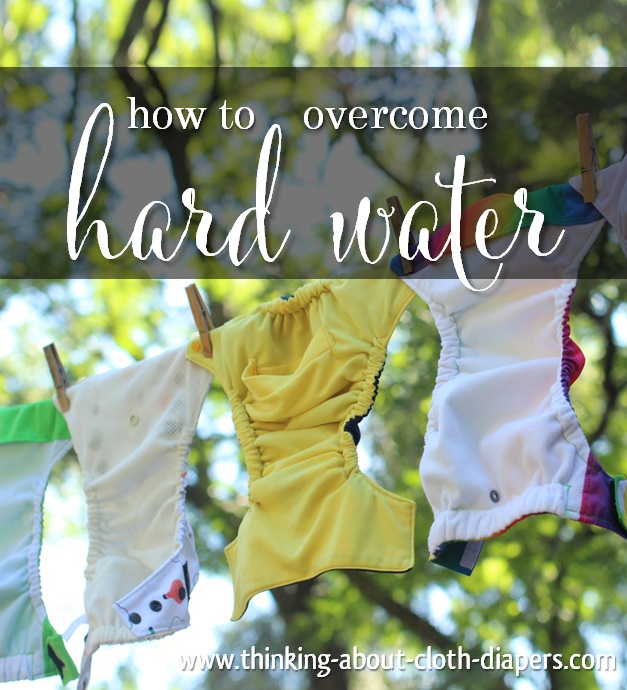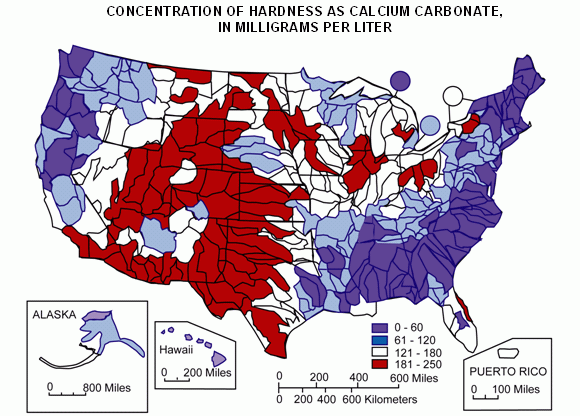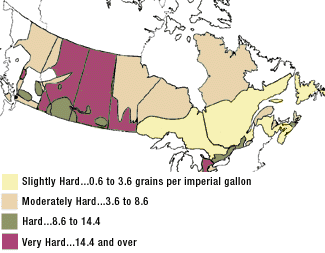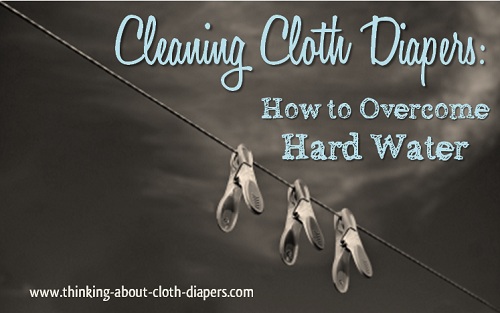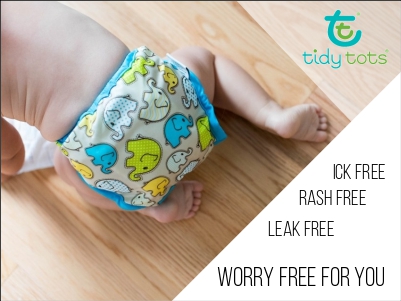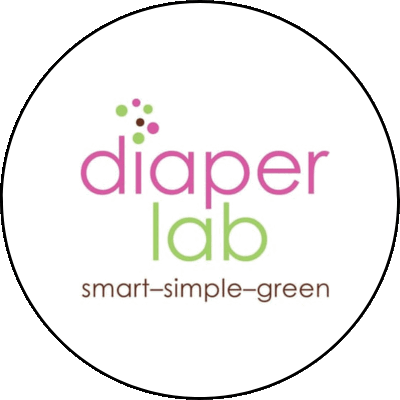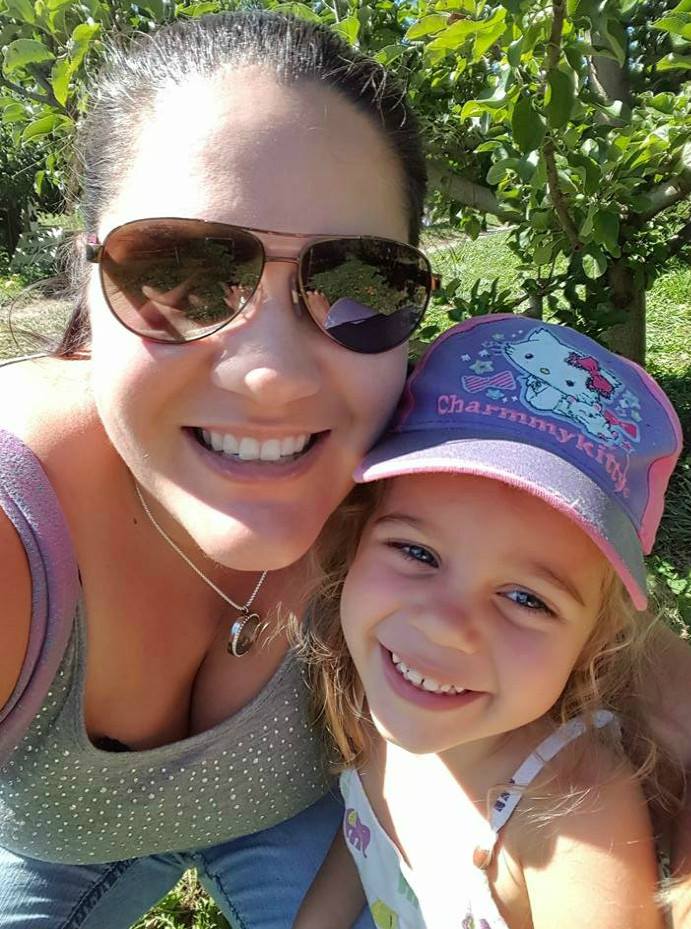Cleaning Cloth Diapers: How to Overcome Hard Water
Did you know that hard water can have a major impact on your cloth diaper laundry routine? Why? Because not every cloth diaper detergent is designed to work well with hard water. If you’ve run into (or would like to avoid!) problems cleaning cloth diapers, read on to find out how to overcome water hardness.
So, you have hard water? It's not surprising, since hard water affects more than 85% of households in the US. Hard water is a normal occurrence across North America. But don’t give up! The good news is that you can manage all but the hardest water conditions with a few simple changes to your laundry routine.
Read on to find out how choosing the right detergent, changing the amount you use, or adding a water conditioner can simplify your cloth diaper experience by eliminating or reducing stripping from your laundry routines, and extend the life of your diapers, too!
Editor’s Note: This is one of the most thorough and completely researched articles on our website, with references to dozens of sources, particularly government extension publications. Believe me when I say that this isn’t an article to skip over! While long, this article will help you understand whether or not a “normal” routine for cleaning cloth diapers will work for you, and what simple things you can do to make washing your cloth diapers a breeze!
What is Hard Water?
Hard water is caused by compounds of calcium and magnesium. The greater the concentration of these minerals, the harder the water.
Most household water in North America is sourced from ground water. Ground water contains dissolved minerals and metals. Hardness is caused by compounds of calcium and magnesium. The types and levels of concentration in your water depend on where you live. Water hardness scales are relatively stable in ground water and generally do not change over time. (Source)
How Do I Know If I Have Hard Water?
There are lots of clues around the house that will help you determine whether you may have a hard water challenge. For example, your dishes and glasses may have spots on them even when you’re your taps may have white deposits on the edges, and your toilet probably has a ring of mineral at the edge of the water. (Source: Bummis Blog)
You can consult the national water hardness charts below for a general understanding of how hard your water is. You can also call your town water supplier and ask them if hard water is a concern. And if you are interested in understanding your own water quality, you can also obtain test strips to test for water hardness and water test kits for more complete water analysis.
How Hard is My Water?
Hardness is measured in grains per gallon (gpg) or parts per million (ppm). Water containing less than 3.5 gpg (60 ppm) is considered soft, whereas water with more than 7 gpg (120 ppm) is considered hard. Below are maps of water hardness for Canada and the US. The US Map is shown in parts per million, while the Canadian map is shown in grains per gallon. What's useful is that the scales on both maps are the same, even though the base measurements are different.
Image Source: US Office of Water Quality
Image Source: Canadian Water Quality Association (CWQA)
Chart Scale
|
Grains per Gallon (GPG) |
Parts per Million (ppm) | |||
|
Soft |
0 to 3.5 |
0 to 60 | ||
|
Moderate |
3.6 to 7 |
61 to 120 | ||
|
Hard |
7.1 to 10.5 |
121 to 180 | ||
|
Very Hard |
>10.5 |
>180 |
Source: North Carolina State University
Please keep in mind: these national maps show where hard water is more prevalent, but at a more local level, water hardness can vary. A mentioned, a test strip or water test kit can help you identify your water hardness level with much more accuracy.
Basic test strips can be purchased inexpensively (around $1 each!) from a variety of sources. Check with your local water store or pool supply store, or buy them from the following online retailers:
- US - Diaper Junction
How Does Hard Water Affect Laundry?
How Do Detergents Work?
Water is a critical part of any routine cleaning cloth diapers! Water passes through the fibers of fabric to do much of the work of releasing dirt. Detergents break the surface tension of water molecules, allowing the water to penetrate the fabric more easily, and freeing up the dirt. (Source: Bummis Blog)
Water helps
dissolve soils and stains, and detergent helps the dirt (soils, urine and
bacteria) to remain suspended in the water so that it can be carried away from
the fabrics in the rinse cycle, rather than re-depositing on the fabric. (Source: North Carolina State University)
Hard water is not as effective at cleaning cloth diapers as soft water, because hard water contains minerals that make a good clean more difficult. In hard water, laundry detergents are not as effective because they waste cleaning agents. When you add detergent to hard water, some of the detergent binds with the calcium and magnesium minerals and settles to the bottom of the washing machine, where it washes down the drain without cleaning your clothes.
A typical water-softening system removes calcium and magnesium ions from hard water and replaces them with sodium ions. Sodium ions do not interfere with the action of household soaps and detergents, and so detergents can work more effectively in soft water than they do in hard water. (Source: Scientific American)
Hard water can shorten the lifespan of your clothing
Hard water is rough on your clothes because the calcium and
mineral deposits in the water stay in the fabric, causing them to wear faster
and fade. The same mineral deposits also
trap dirt and soap in the clothing, leaving them looking yellow and dull. Deposits on fabric have been shown to damage
fibers and shorten the life of clothes by up to 40%. (Source: ehow.com)
Please keep in mind that commercial fabric softening products such as liquid Downy or Bounce sheets, do not soften your water or change the chemical properties of your water… they simply mask the problem of rough clothing, making your towels and other laundry more tolerably soft! These products coat the surface of the cloth fibers with a thin layer of chemicals that make the fibers feel smoother. (Source: Wikipedia) Unfortunately, because fabric softeners coat the fibers, they reduce the absorbency of natural fiber diapers and cause repelling issues with stay-dry fabrics that are used in pockets, and so should not be used in cloth diaper laundry. (Source: Zany Zebra)
How Does Hard Water Affect Cloth Diaper Laundry?
Hard Water Can be Especially Challenging with Cloth Diaper Laundry
Most commercial big-name laundry detergents contain built in softening agents, which bind to the hard water minerals, allowing the actual cleaning components to focus on fighting dirt and stains. (Source: Bummis Blog) Many eco-friendly and “cloth diaper detergents” do not contain (or contain less of) these important ingredients, which can result in problems in getting your cloth diapers clean.
If you don’t plan to treat your hard water (either with a mechanical water softening system or a water conditioning additive), you will certainly have better laundry results on your cloth diapers using a commercial detergent formulated for hot water.
And, keep in mind: If you have a high-efficiency washing machine, cleaning cloth diapers can be even harder with hard water. In high efficiency machines, the challenge can be that because the machines use very little water, you can actually have the hard water mineral deposits and urine residues build up in your fabrics, especially if your water isn’t treated with a softening agent that keeps the minerals in the water – and the dirt! - in suspension so that they rinse away completely.
Better Cloth Diaper Laundry Results
Short of installing a water softener (which may be your best bet, but not necessarily financially feasible!), there are several things you can do to get better results when washing cloth diapers with hard water.
Select the Right Detergent
In the past, powdered phosphate detergents were recommended for laundering in hard water because phosphate builders tied up hard water minerals minerals and held them in solution until they could be rinsed away. When The Clean Detergent Act was launched in 1987, manufacturers were required to eliminate the phosphorus used in detergents.
Today’s commercial detergents (such as Tide and Gain) do not contain phosphates, but they do have a high concentration of surfactants (surface active agents) which contribute to their cleaning power and are less sensitive to water hardness. Source: Water Quality and Laundry Problems, North Carolina Cooperative Extension Service,1996.
Commercial detergents usually also contain built in softening agents, which can bind to the hard water minerals, allowing the actual cleaning components of the detergent to focus on fighting dirt and stains.
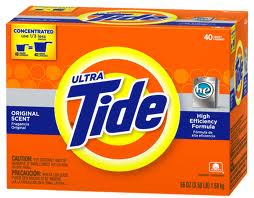
Many of our readers use Tide on their cloth diapers. If you are unsure about how it works, you can read about readers' experiences in this Facebook thread here.
If you don’t plan to soften your hard water, you will certainly have better laundry results on your cloth diapers using a commercial detergent formulated for hot water.
Use More Detergent than the Original Manufacturer Recommendation
When doing laundry with untreated hard water, you will need more soap or detergent to clean your clothes properly. Remember, if you have hard water, some of the detergent you are adding is binding to the minerals in the water, and is not going to be cleaning as you intended it to.
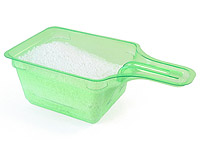
There is no set guide for increasing the amount of detergent. The thing to keep in mind is, unless you add enough detergent to hold the dirt in suspension in your water so it can be rinsed away, the dirt will end up back on the very articles you intended to clean. (Source: Martha Stewart) If you have iron in your water, your problems can get even worse (see our section below on iron).
Gradually increase your detergent until you are happy with the results. Generally, very hard water (higher than 10 gpg or 180 ppm) cannot be softened enough by adding more detergent – in these cases, a packaged water conditioner will generally boost the cleaning power of your detergent considerably. (Source: University of Nebraska-Lincoln)
Use a Water Conditioning Additive
Remember, when you add detergent to hard water, some of the detergent combines with the calcium and magnesium granules that settle to the bottom of the washing machine, where it washes harmlessly down the drain without cleaning your clothes.
Adding a water conditioner to the washing machine before adding your diapers will soften the water, which can help your detergent stay dissolved in the water, where it can work on cleaning cloth diapers.
To be most effective, a water conditioner should be added at the beginning of both the wash and the rinse cycles. The conditioner's chemicals tie up the hardness minerals, and allow the detergent to do a good cleaning job. (Source: Baby Center Discussion Thread)
There are a number of water softeners or conditioners available on the market today. Check out our next section for more information on the types and brands available.
Install a Mechanical Water Softening Unit
If you have very hard water, you may find that nothing works well with your cloth diapers. In general, you can control up to about 15 to 16 grains of water hardness with detergents and water conditioners.
If your water contains over 15 or 16 gpg of hardness (260 ppm), special softening equipment is usually needed for best results. (Source: University of Nebraska-Lincoln) Installing a rental or purchased water softening unit will save you money in the long run, as it will reduce the detergents, household and personal cleaners you need, and extend the life of clothing, appliances, and kitchen and bathroom fixtures.
Other Considerations
- Using water as hot as is appropriate also contributes to good cleaning results in hard water. (Source: Wisegeek)
- Use adequate amounts of an
appropriate detergent and water as hot as recommended for the fabric when cleaning cloth diapers
- If you notice that the stink is only with your microfiber inserts/diapers, you may want to try all natural fabrics such as cotton, hemp, or bamboo. These all natural fabrics do not tend to hold the stink in as much. (Source: My Cloth Diaper Stash)
Do Yourself a Favor - Skip the Vinegar!
There are conflicting opinions on vinegar in the cloth diaper world.
However, I learned first-hand that vinegar can make hard water problems even worse when cleaning cloth diapers! The reason for this is that vinegar can bind to the minerals and react to creating an all new level of stinkiness! (Source: My Cloth Diaper Stash) These stinkiness problems can get even worse if you are using synthetic fibers, such as microfiber and polyester fleece.
More About Water Conditioners
Water softener agents and conditioners are generally sold in the laundry section of home improvement and big-box stores. (Source: Wisegeek)
There are two types of water conditioners:
- Non-Precipitating: the best for hard water laundering. Most commonly used, and are recommended for automatic washers (Source: NCSU). Most common are RLR and Calgon, plus White Rain, Blue Raindrops, and others
- Precipitating: seldom used with cloth diapers unless you are washing by hand or with a wringer washer. Most common are Borax and Washing Soda,plus Raindrops, Blue Dew, Climalene, Melo, White King and Borateem
Non-Precipitating Water Conditioners
Non-precipitating water conditioners tie up hard water minerals and hold them in solution, so the water remains clear, and the soils do not re-deposit back on the clothes. These conditioners make the water feels slippery.
They are safe for all washable fabrics, and are used in automatic washers. When using these water conditioners, it is important to add them twice: during the wash cycle and during the rinse cycle to keep hardness minerals from combining with any remaining detergent left from the wash.
Precipitating Water Conditioners
Precipitating water softeners settle out the minerals that make water hard, and are used only in the wash water (not the rinse water). (Source: University of Nebraska-Lincoln) When used, the water becomes cloudy.
These
softeners work better in non-automatic (old-fashioned) wringer washers, since
you lift the clothes out. In an automatic washer precipitate softeners form a residue which clings to
fabric and the machine and is hard to remove. (Source: NMSU)
Stripping Cloth Diapers
Please note: The first time you use a water
conditioner for cleaning cloth diapers, expect lots of bubbles.
It’s important that you rinse until the bubbles are no longer
present! In fact, when you first use a
water conditioner, you may wish to strip your cloth diapers. You can read more in our article about stripping your diapers.
Excess detergent and hard water deposits generally build up in your cloth diapers over time, so if you see suds appear when they are washed with a conditioner, you’ll need to do additional rinses with a conditioner. When suds no longer appear on top of the water when cleaning cloth diapers, it indicates the complete removal of trapped dirt and residue of washing additives. Source: University of Nebraska-Lincoln)
Common Water Conditioners
- Calgon Water Softener: Calgon can be purchased in liquid or powder form, and is one of the most popular non-precipitating water conditioners available. It is phosphate free (yay!) and helps to prevent detergent build-up, while neutralizing hard water minerals in your fabrics. It is also often recommended in diaper trouble-shooting guides (for example, the Stripping Cloth Diapers guide from Zany Zebra) since it can be used when stripping diapers to help remove hard water minerals and dirt that have built up in the fabric over time. Please note that Calgon has fragrance added.
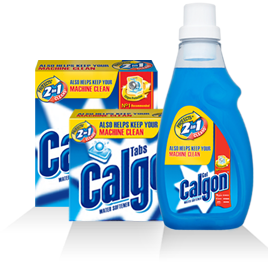
- RLR Laundry Treatment: RLR is another non-precipitating water conditioner that is available in a powder or capsule form. It contains no phosphates, and is biodegradable. RLR should be added with your detergent in your hot water wash. When cleaning cloth diapers, the recommendation is to use a full packet with a top-loading washing machine, and 1/3 to ½ packet for a front loader. Note: RLR is a brand name for a product manufactured by Cadie, and not an abbreviation.
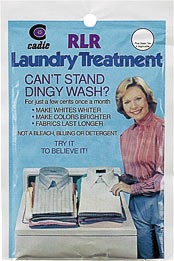
- Laundry or Baking Soda: Many manufacturers recommend using ¼ cup to ½ cup of baking or washing soda with hard water. You need to be careful with washing soda because it is a precipitating water softener. The sodium binds with calcium and magnesium in the water, but it creates an insoluble substance. If you don’t rinse your diapers thoroughly enough to remove all of the soda, it will re-deposit back onto the fabric and cause build-up. This can actually create worse problems! (Source: Baby Center Discussion Thread) If you plan to use laundry or baking soda for cleaning cloth diapers, you must rinse your diapers until there are no more bubbles.

- Borax: 20 Mule Team Borax (one of the most popular brands) recommends adding ½ cup of powdered Borax to every load, along with your regular detergent, whether you have a regular or high efficiency machine. Just like washing soda, Borax is another precipitating water softener, so you need to be careful that it rinses clean. Otherwise, it can redeposit back onto the fabric and cause build-up. Because Borax is all natural, it is a commonly used ingredient in home-made and cottage-industry detergents.

- Others:
One source even recommends table salt to
soften water instead of a conditioning formula. (Source: Wisegeek)
Note: If a large amount of water conditioner is used each week, it may be cheaper, especially in the long run, to install a mechanical water softener. In general, about 15-16 grains of water hardness can be controlled with detergents and packaged water conditioners. Above that, special mechanical softening equipment is recommended.
What About Problems with Iron?
If you have iron in your water, you may have additional challenges with cloth cleaning cloth diapers. (Source: NCSU)
Iron may be dissolved in the water or may be suspended as particles. The iron may come from the water supply, or it may come from rusting pipes or water heaters. Fabric staining can occur with iron concentrations of 0.2 to 0.3 parts per million. Laundry problems caused by high concentrations of iron include yellow, orange, or brown stains or spots, or overall discoloration. If your water has a high iron content (look for reddish stains in the shower and toilet), launder with an iron-removing product, available in the laundry aisle of many supermarkets. (Source: Martha Stewart)
Don't use chlorine bleach: traditional laundry bleach can react with dissolved iron to form stain-causing precipitates. Combined with iron and hot water, chlorine bleach can yellow clothing. If you have iron in your water, oxygen bleach products should be used instead of chlorine bleaches. While stain removal ability may be more limited with oxygen bleaches because their bleaching action is milder, if used consistently, they are generally effective in maintaining overall whiteness of fabrics. (Source: NSCU)
Non precipitating packaged water softeners or conditioners can be used to control small amounts of iron in the wash water. (Source: NSCU) They should be added to the wash water before adding the laundry to keep the rust from depositing on the garments. The conditioner must be used in both wash and rinse water. Use according to package directions.
If, after using packaged water softeners, you still have rust staining problems, it may be necessary to install iron water treatment equipment.
Buying Water Additives & Conditioners
While you may have luck finding Borax and washing soda in the laundry aisle of your local department store, in my experience most stores don't carry RLR or Calgon. Below are links to on-line retailers that sell and ship water treatments:
- Borax (Amazon.com | Walmart.ca)
- Calgon (Amazon.com | Amazon.ca)
- RLR (Amazon.com| LagoonBaby)
- Washing Soda (Amazon.com | Well.ca)
Further Reading
Below are links to some of the best articles I found on cleaning cloth diapers. When writing this article, I have attempted to pull together much of the most relevant information included in these (and countless other articles). If you have time and want to dig in even more, they are definitely worth a read.
- De-Myth: Baking Soda, Washing Soda, Borax, Detergent
- What happens to your cloth
diaper wash routine when you move?
- Packaged Water Conditioners, University of Nebraska-Lincoln
Conclusion
Don’t let hard water hold you back! When cleaning cloth diapers, you can manage all but the hardest water conditions with a few simple changes to your laundry routine. Whether you choose to switch to a commercial detergent, increase the amount you use, or add a water conditioner, I hope that the research in this article simplify your cloth diaper experience by eliminating or reducing stripping from your laundry routines, and extending the life of your diapers.
For questions or comments on cleaning cloth diapers, or any other topic, head over to our Facebook page and leave us a note!
Photo Source: FreeDigitalPhotos.net
Sponsor Love
More in Our Laundry Series
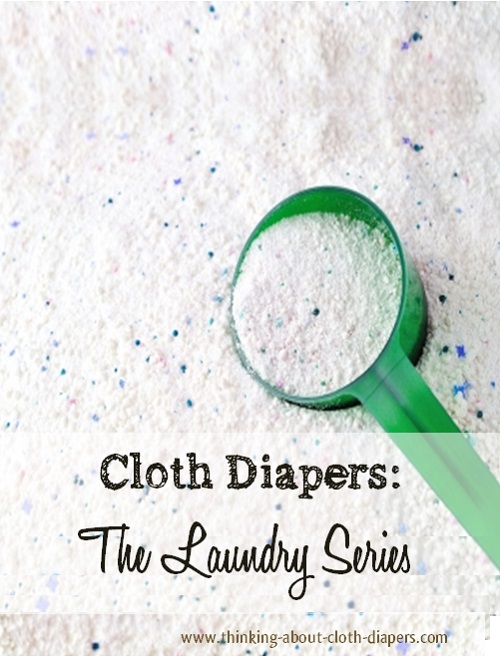 |
Overcoming Hard Water: An Understanding of How to Get Your Cloth Diapers Clean How to Store Your Diapers Until Wash Day Off on the Right Foot: Prepping Your New Diapers |
